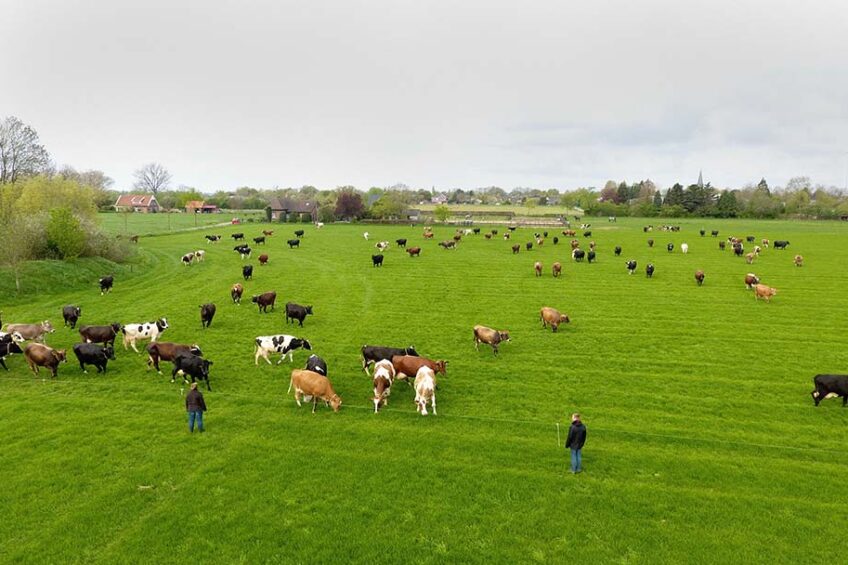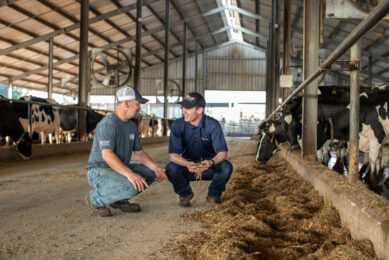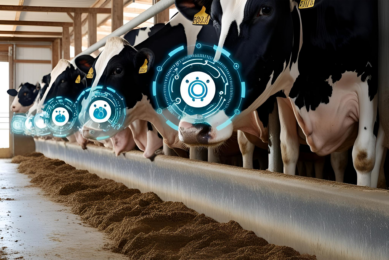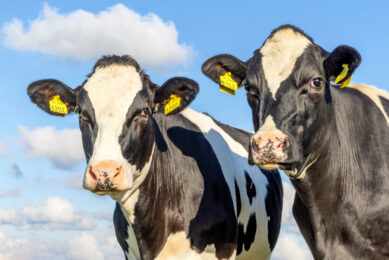Do sustainable dairy farms perform better economically?

The main dairy sustainability concerns are related to supporting ecosystems, climate impact, animal welfare and farm viability. As farm viability is at the heart of farmers’ concerns, most dairy producers are trying to answer the question as to whether sustainable farms are economically viable.
Taking a Dutch dairy farm scenario and according to a study by Wageningen Economic Research commissioned by the Sustainable Dairy Chain, a theme group of ZuivelNL, Dutch dairy farms that work more sustainably also perform well or even better economically than less sustainable dairy farms.
Sustainable dairy farming is at a transformative crossroads, with significant advancements in emission reductions, animal welfare, resource management and technological integration. However, questions remain on the producer side as to whether adopting dairy sustainable farming strategies automatically translates into economic benefits.
In a bid to answer this provocative question, researchers from Wageningen University’s Department of Economic Research compared the economic performance of Dutch sustainable dairy farms with less sustainable dairy farms. Their study adds more insight to policymakers and dairy producers on some of the considerations to attain both sustainability and profitability on dairy farms.
Lower costs and higher yields per kg of milk
The researchers found that the costs directly related to milk and feed production are €2.56 per 100 kg of milk lower at more sustainable dairy farms than at the others. This was mainly attributed to the lower costs for animal feed (-€2.13) and lower manure disposal costs (-€0.25), which are both related to lower milk production per hectare.
What was also observed is that more sustainable dairy farms are, on average, more extensive and produce 150,000 kg less milk at farm level than less sustainable dairy farms. Milk production per hectare at the more sustainable dairy farms averaged 14,400 kg, while the remainder group was more than 3,000 kg above this. The costs for animal health were also lower (-€0.14) while the total cost per 100 kg of milk was €1.68 lower on the more sustainable dairy farms.
In addition to lower costs, the more sustainable dairy farms had €3.30 higher returns per 100 kg of milk. About half of this difference was the result of a higher milk price (+€1.67) explained, among other things, by the financial valuation of environmental or other sustainability performance-related aspects. However, the researchers emphasised that this scenario might not be a fixed benchmark as in the Netherlands factors such as market demand and the location of the farm can be decisive.
“The lower costs and higher yields per 100 kg of milk lead to an income at the more sustainable dairy farms, despite the smaller farm size, which is more than €28,500 higher at the farm level than the remaining group of farms,” the researchers said.
Droughts affect sustainability
The more sustainable dairy farms were found to have 12% less peat soil than the rest of the farms and the most common soil type on the farm is often sand. In terms of provincial distribution, the more sustainable farms were mainly located in the provinces of Overijssel, Friesland and Groningen, and were less represented than the rest of the farms in Gelderland, North Holland and Drenthe. This discrepancy was partly associated with the drought in 2020, which may have harmed sustainability performance; the drought was more extreme in Gelderland and hardly played a role in the north of the country.
Experience, craftsmanship and entrepreneurship
The experience, skillset and entrepreneurial mindset of the dairy producer were also found to make a significant contribution to sustainable dairy farming. The more sustainable dairy farms were more often run by middle-aged farmers between the ages of 45 and 55 and less by entrepreneurs under the age of 45.
“A possible explanation is that younger livestock farmers have relatively less experience. Middle-aged dairy farmers have already learned their lessons in the past and have developed their craftsmanship accordingly. Another explanation may be that young entrepreneurs are more focused on growing and developing their farms and are less focused on optimisation.”
It was found that craftsmanship or a strong skillset determines performance in the field of sustainability. However, these skills can be increased through knowledge exchange and/or the use of independent advisors or training. On the other hand, entrepreneurship is also important as it is characteristic of more sustainable dairy farmers who stick to the strategy that suits their enterprise the best. However, the long-term goals of dairy processors can influence the strategy that a dairy enterprise will choose; these goals provide clarity about what is expected of a dairy farmer as a member or supplier of a dairy processor in the future.
Is extensification economically feasible?
In this study, researchers found that the more sustainable farms were more extensive and had a higher income. However, they highlighted the fact that this does not mean that extensification is economically feasible.
“Being extensive is not the same as becoming extensive. For example, farms with more extensive business operations may have been following a strategy for decades to maintain a certain balance in the ratio of land and animals as the farm grows. Given the current social context, these enterprises now have a better starting position.”
On the other hand, other enterprises may have consciously opted for a more intensive farm system within the legislation that applied in the past, with relatively more investment in, for example, production rights (milk quota and later phosphate rights, functional barns and manure processing). This means it may be economically difficult or impossible for those farms to extensify now, for example, because of investments made in the past.
“After all, expansion means more land and land is expensive and not always available. Extensification might also mean keeping fewer animals so that not all capacity is used and the fixed costs per kg of milk increase,” they said.
Although influenced by several factors that could result in discrepancies, sustainable dairy farms (Dutch scenario) are associated with economic viability and the Dutch Sustainable Dairy Chain organisation proactively searches for an integral approach to achieving dairy sustainability goals.
Join 13,000+ subscribers
Subscribe to our newsletter to stay updated about all the need-to-know content in the dairy sector, two times a week.










